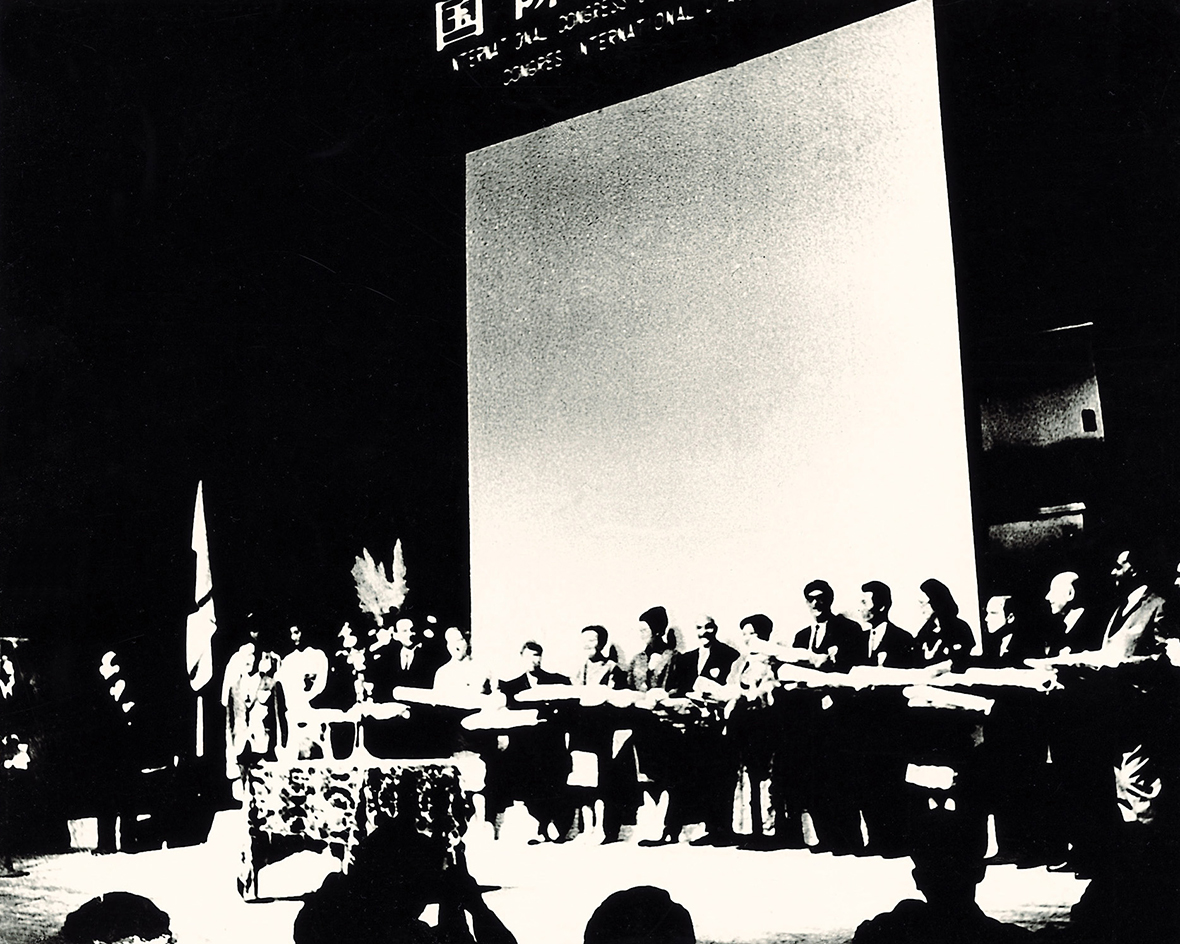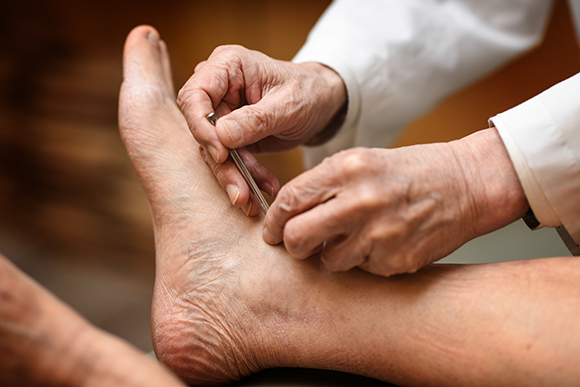Eight-Constitution Medicine
Eight-Constitution Medicine
『Through God's grace, Eight-Constitution Medicine was founded
by Dr. Dowon Kuon (1921-2022) in the Republic of Korea.』

Naturally curious from a young age, Dowon Kuon, while struggling with his own illnesses and ailments, discovered personal physical distinctions and reactions that others may not experience. Subsequently, he ciphered new algorithms and deductions of the human body, developing a new paradigm within Eastern medicine & philosophy. This new paradigm became Eight Constitutional Medicine: a classification of eight distinct human body types, each characterized by its own physiology, pathology, regimen and treatment. Not only does Eight Constitutional Medicine delineate the intrinsic nature of the different organs within the human body, but it also provides a guide for the individual human body to achieve a healthy harmonic state with consideration of its the natural surroundings. He explored the deep realm of the human body that modern science could not obtain through medical research. He outlined the invisible phenomena of the human framework and subsequently was able to treat various incurable diseases. This is proven by the numerous patients he has successfully treated and the scholars that continue to follow in his footsteps.

The International Congress of Acupuncture & Moxibustion in Japan 1965
“Human Body Constitution is not a distinction of lineage or race, nor a distinction of form or cognition, but a distinction of individuality. The human species can be further characterized into individual types, each with its own intrinsic characteristics. These are called Eight Constitutions: eight individualities as a whole—not only mentally and physically. All people, despite the state of their social and cultural development, race, or gender, are all divided into eight constitutions. This is how it was, how it currently is, and how it will be in the future.”
- Dowon Kuon, founder of 8 constitutional medicine -
Per Dr. Dowon Kuon's Eight Constitutional Medicine, the following are the eight constitutions of humankind
Eight Constitutional organ dynamics
Each constitution’s name is based on a Latin or Greek word root for a distinct organ. For example, Hepatonia’s root is the Greek word root “Hepar,” which means liver; this is because the liver is the strongest organ in this particular constitution. Each constitution is named using the Latin or Greek word root for its strongest organ: “Cholecyst” is Latin root for gallbladder, “Pancreo” for pancreas, “Gastro” for stomach, “Pulmo” for lungs, “Colo” for large intestine, “Reno” for kidneys, “Vesico” for bladder. Although this is the greatest distinguishing factor between the different constitutions, the individual constitutional characteristics arise from the dynamic relationship between organs of each constitution; this dynamic order includes relationship between the strongest and weakest organs, as well as the intermediate organs.
Each constitution has an innate order of weak and strong organs that develop a state of “appropriate physiological imbalance”, which is the healthiest state. A regimen and lifestyle that disagrees with a designated constitution may disrupt its “appropriate physiological imbalance”, changing it to a state of “acquired excess imbalance,” which is a state of disease. Subsequently, there are eight types of order of organs based on weak and strong, eight types of human physiological framework, and eight types of pathologies. Even if the symptoms are the same across constitutions, the cause of each disease is different for each; therefore, the treatment should also vary for each constitution.
Introduction of the dynamic orders between organs in each constitution.
| Hepatonia | liver(wood-yang) > kidney(water-yang) > heart(fire-yang) > pancreas(earth-yang) > lungs(metal-yang) |
|---|---|
| Cholecystonia | gall bladder(wood-yin) > small intestine(fire-yin) > stomach(earth-yin) > bladder/uterus(water-yin) > large intestine(metal-yin) |
| Pancreotonia | pancreas(earth-yang) > heart(fire-yang) > liver(wood-yang) > lungs(metal-yang) > kidney(water-yang) |
| Gastrotonia | stomach(earth-yin) > large intestine(metal-yin) > small intestine(fire-yin) > gall bladder(wood-yin) > bladder/uterus(water-yin) |
| Pulmotonia | lungs(metal-yang) > pancreas(earth-yang) > heart(fire-yang) > kidney(water-yang) > liver(wood-yang) |
| Colonotonia | large intestine(metal-yin) > bladder/uterus(water-yin) > stomach(earth-yin) > small intestine(fire-yin) > gall bladder(wood-yin) |
| Renotonia | kidney(water-yang) > lungs(metal-yang) > liver(wood-yang) > heart(fire-yang) > pancreas(earth-yang) |
| Vesicotonia | bladder/uterus(water-yin) > gall bladder(wood-yin) > small intestine(fire-yin) > large intestine(metal-yin) > stomach(earth-yin)) |
Being “strong” is different from being healthy and being “weak” is different from being sick. One can be strong but grow ill just as one can be weak but healthy. Perhaps the best way to understand the term “strong” when describing an organ is by defining it as being prone to excess activity in comparison to other organs. When the strong organs are appropriately strong and the weak organs are appropriately weak, the overall constitutional order is established, and harmony is achieved. A state of order and harmony is called a state of “appropriate physiological imbalance”. If the strong organ becomes too strong, pathology will develop. This also applies when the weak organ is further weakened. When pathology ensues, there is a state of “excess imbalance”. Although the strongest and weakest organs predominantly dictate the overall state, the intermediate organs that play subsidiary roles to the strongest organ and weakest organ are also critical in determining the overall or even localized physiological and pathological conditions.
Each individual constitution’s the dynamic order between organs may be sensitive and negatively reactive to inappropriate foods and drugs. Foods that directly affect the strongest and weakest organs will most evidently create a state of excess imbalance and a subsequent state of disease. Foods that affect the intermediate or subsidiary organs can also create this state indirectly as well.
When following one’s constitutional regimen, one will quickly notice the same symptoms consistently appear when one type of food is consumed. For example, gastrointestinal symptoms are associated with certain food, and symptoms such as insomnia, arrhythmia, and anxiety are associated with certain food. This delineates how each constitution is strictly and consistently influenced by particularly related foods.
In Eight Constitutional Medicine, determining the constitutions is first. Then, diseases based on the eight constitutional physiologies and pathologies must be defined, which can delineate the cause of the disease and determine the subsequent treatment using Eight Constitutional regimen and acupuncture.
8 constitutional diagnosis
Eight Constitutional pulse reading method is used to determine an individual’s constitution. This method is completely different from the traditional pulse diagnosis method used in traditional Eastern medicine. In order to determine a constitution, one of the eight pulse patterns associated with one of the eight constitutions must be determined from the radial artery of the left and right wrists. These pulse patterns do not change throughout life. The Eight constitutional pulse reading method is an accurate technique, but proficiency in this method requires a long period of training and experience.
8 constitutional health management
In 8-constitution medicine, except for special cases, the 8 constitutional regimen (food) method and the 8 constitutional acupuncture treatment are used to prevent and treat diseases. Not a few patients experience that various chronic diseases and are treated with the regimen alone without acupuncture treatment. Specifically, they find out that a certain food is the immediate cause of a certain symptom and when that specific food is excluded, the specific symptom is also immediately disappearing.
The relationship between food and constitution can be further described as the following. For example, when a patient with Hepatonia consumes food that stimulates the liver, the strong liver not only becomes excessively strong, but also suppresses the lungs, which is the weakest organ as well as an antagonist organ of the liver. This state of “excess imbalance” will lead to pathology. This state leads to compromised immunity and subsequent complaints or symptoms of disease. Therefore, individuals with Hepatonia, who have a naturally strong liver and weak lungs, must refrain from foods such as seafood, which support the liver, and consume foods like beef, which support the weak lungs, to maintain state of appropriate imbalance. It is imperative to also refrain from drugs and activities that cause physiological or pathological stimulation of the strong liver or suppression of the weak lungs.
- Thomas Edison -
8 Constitutional acupuncture treatment
Eight Constitutional Medicine creates 8 constitutional acupuncture formulas using principles of the meridians and theories of relationships among the organs to determine the causes of diseases. And it cures diseases that cannot be cured with regimen alone. Using unique eight constitutional acupuncture, the state of “excess imbalance” is quickly corrected and state of “appropriate physiological imbalance” is restored. This is not a means of controlling symptoms. Eight constitutional acupuncture treats and cures the cause of the disease itself. When used in combination with regimen, the therapeutic effect can be optimized.
Vision of Eight Constitutional Medicine
- Woojun Kuon -





